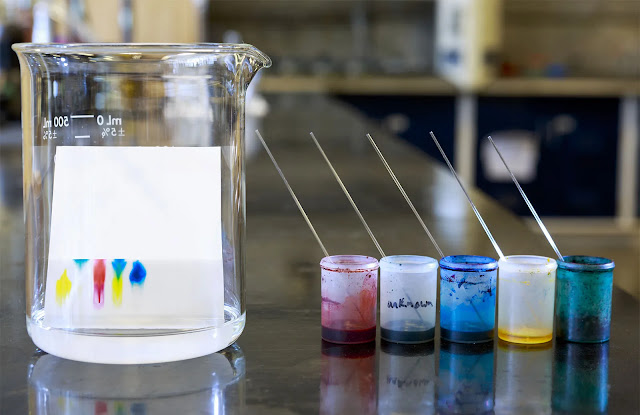This technique was developed by the English chemists Martin and Synge in 1944.

It helps in the separation of a mixture of biochemical or chemical substances, with the help of a suitable solvent, which gets absorbed on to a special type of filter paper (chromatographic paper) strips. The solution containing unknown compounds is placed gradually at a locus (a process known as loading) on the large chromatographic paper. The loading is continued till the locus is fully saturated with the solution. When this locus spot is dry, the paper is placed with one edge dripping into a tray containing the mixture of solvents. The solvent varies, depending on the substances to be separated and on the solubility of solutes. After the solvent front has moved the desired distance (determined empirically) from the locus spot, this front is marked and the paper is dried. The substances to be separated occupy a particular spot (away from the locus spot) on the chromatographic paper and can be identified by a colour reaction using a special kind of chemical substance or UV rays (in case of identification of nucleotides).
Paper chromatography may be three types
1) descending, (2) ascending or (3) two dimensional.
In descending chromatography, the solvent is placed on the top of chromatographic chamber (a chamber made up of wooden sides and glass covers) in the trough and the substances to be separated are loaded on the chromatographic paper near the trough. The solvent moves in the downward direction.
In ascending chromatography, it is just the reverse. In two-dimensional paper chromatography, the solvent is run in a descending or ascending direction and this is immediately followed by turning the paper at 90°-angle to that of the initial direction and running the chromatogram again using a new solvent.
Two-dimensional chromatography helps separate and identify substances which are otherwise difficult to separate or overlap with one another in unidirectional chromatography. The separation of substances is based on liquid-liquid partition of the compound. A constant value called R, (ratio of fronts) is characteristic of each compound:
Rf = Distance travelled by the solvent
Distance travelled by the solute
